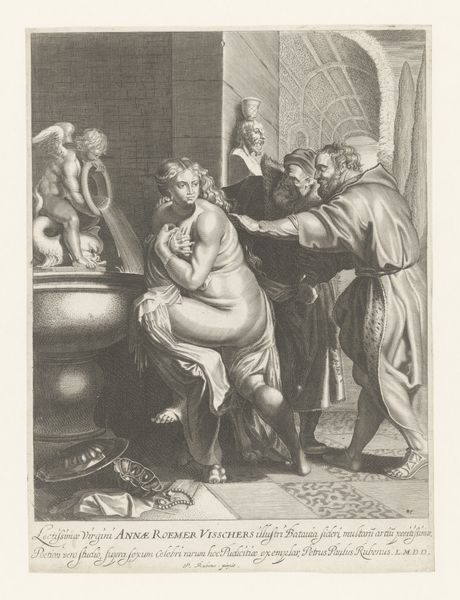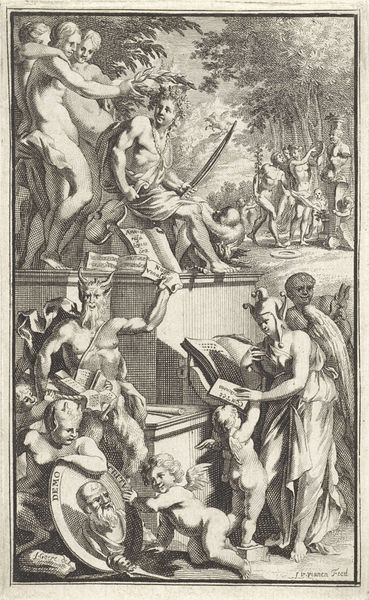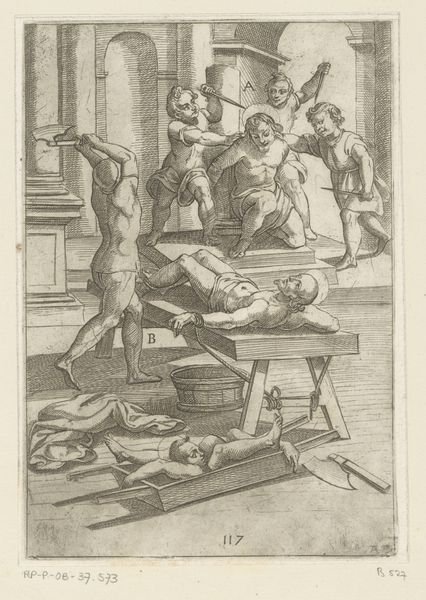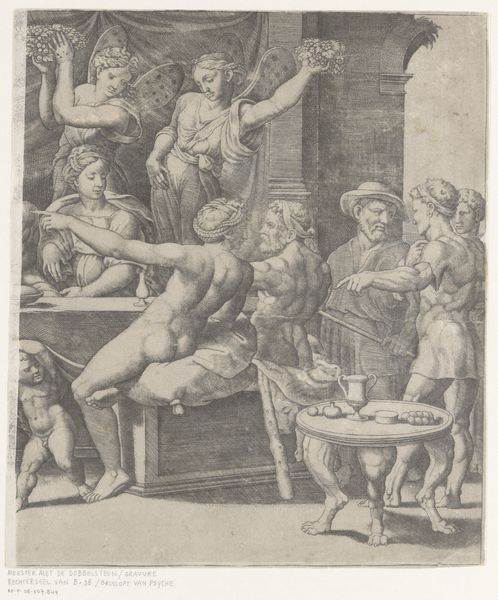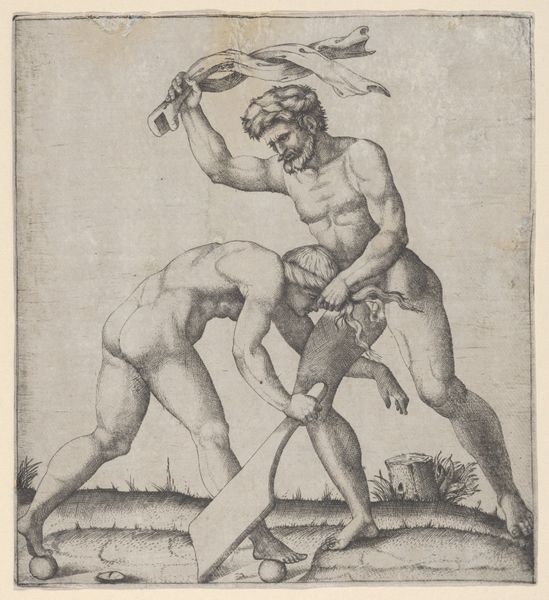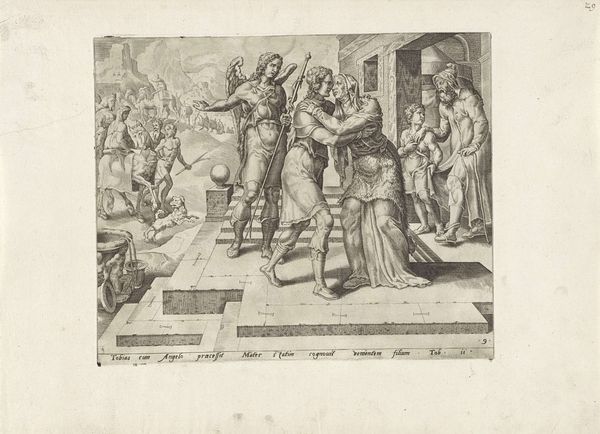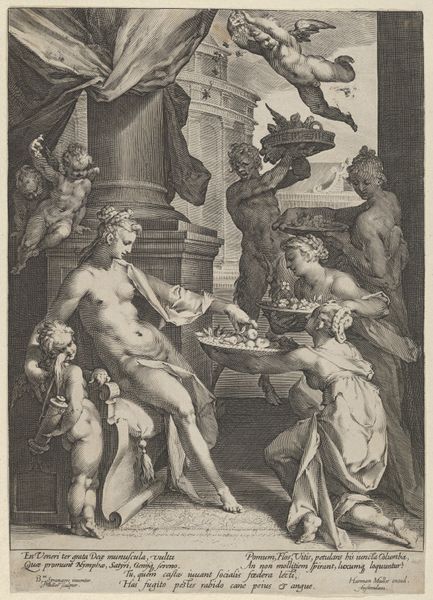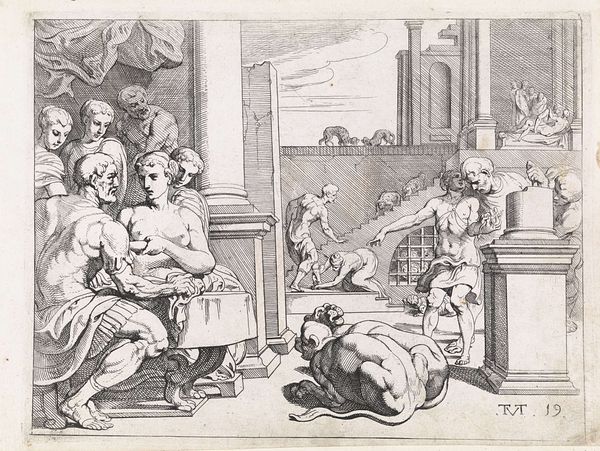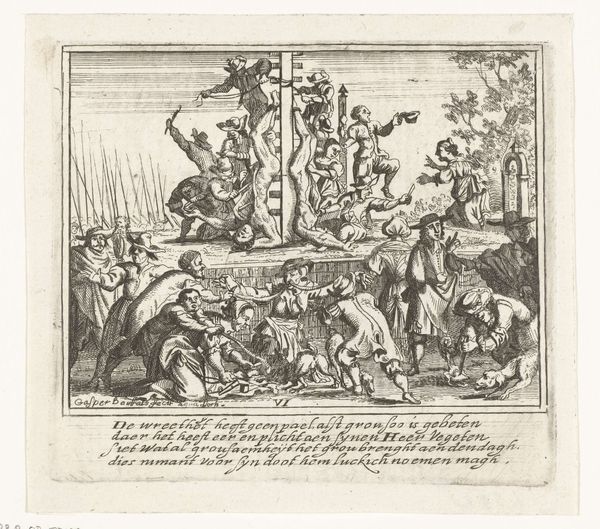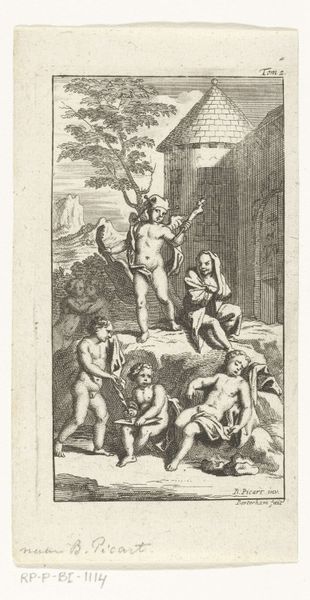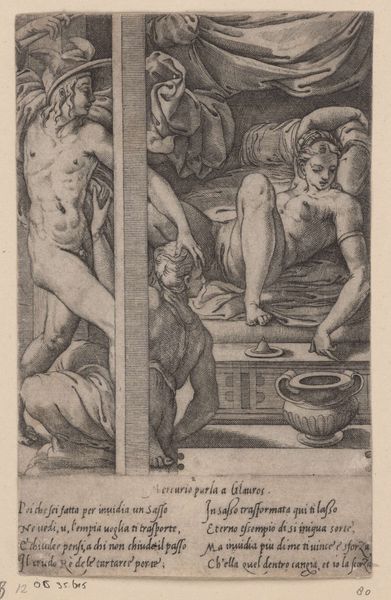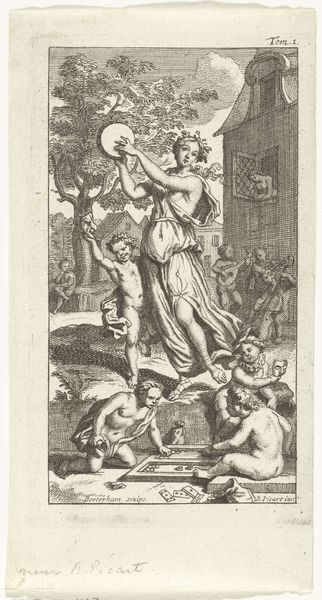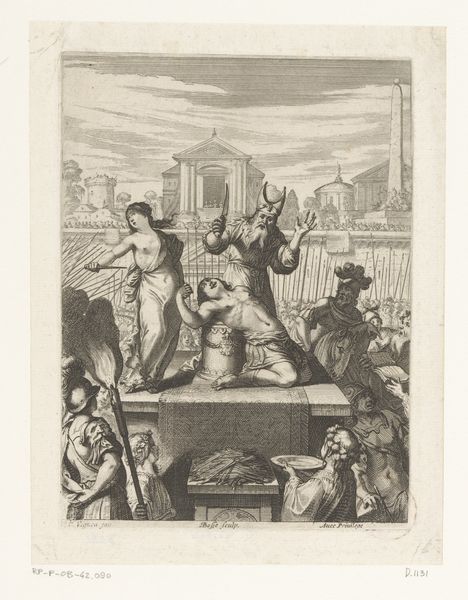
print, engraving
#
allegory
#
baroque
# print
#
figuration
#
line
#
history-painting
#
engraving
Dimensions: height 232 mm, width 177 mm
Copyright: Rijks Museum: Open Domain
Editor: Here we have "The Judgment of Solomon," a print from 1635 by Remy Vuibert, after Raphael. The sharp lines create a sense of drama, particularly with the figure on the right seemingly mid-swing. What do you notice in the composition? Curator: Indeed, the dynamism arises from the carefully arranged figures, grouped yet distinctly posed. Observe the formal qualities. The strong diagonal lines, formed by the executioner’s arm and the resisting mother's gesture, create tension. How do the other figures relate? Editor: The King sits back observing, and another woman kneels, seemingly pleading. The figures appear almost sculpted, defined by the dense, rhythmic lines of the engraving. Curator: Precisely. Note how Vuibert utilizes line – its weight and direction – to sculpt form and direct our gaze. The Queen kneels at stage left forming a solid grounding presence. Semiotically, how do the varied expressions reinforce or counteract this dynamism? Editor: The figures show contrasting emotions of indifference, violence, despair. The composition uses their dynamic positioning as contrast to an otherwise balanced work, keeping us unsure of the outcome of such harsh actions. Curator: Yes, and the implied lines connecting these figures generate an active space. How might the limited tonal range affect your interpretation? Editor: With only shades created from the fine, rigorous lines, the narrative is created by detail and not broad expression. Perhaps this engraving is successful in capturing our gaze on the expressions because of it. I hadn't thought about lines forming expressions until now. Curator: Considering the structure emphasizes balance and action, we see a moment of extreme contrast successfully expressed within a limited technical manner.
Comments
No comments
Be the first to comment and join the conversation on the ultimate creative platform.
